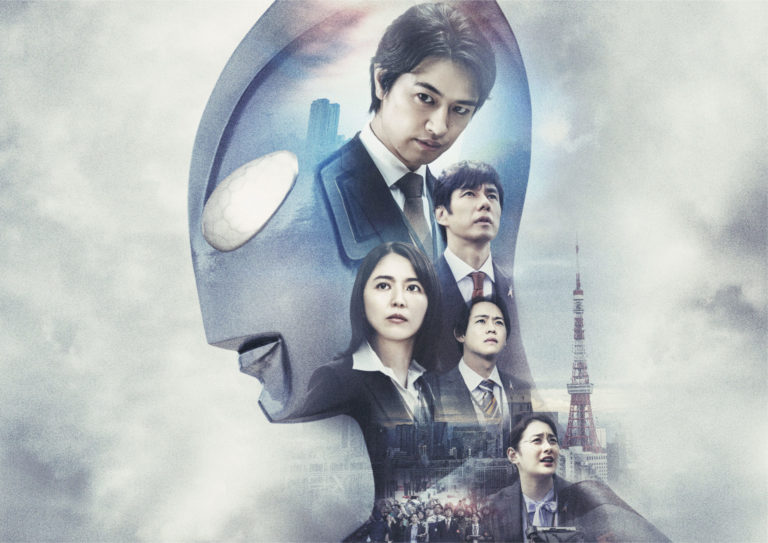
Q: Like your previous film, “Shin Godzilla,” you paid homage to the original “Ultraman” series by setting it in modern times. Is there any reason why you wanted it to take place in the current time for this film, “Shin Ultraman,” is it still appropriate for a generation who doesn’t even know about the original “Ultraman” series?
Shinji Higuchi: The original “Ultraman” series was broadcast in 1966, and I watched it later. What was depicted in the story of the original “Ultraman” series was a future event for me at the time. If you show that story to today’s children, it will be a thing of the past. It’s a work that depicts the future of the past.
It’s a bit complicated, as it depicts the future as seen from the past. Since that’s the case, I wanted to make it based on the premise of something like a bright tomorrow. In order for today’s children to see it, I had to make it in the present time as a stepping stone.
Q: Superheroes are very active in TV and movies in the United States. What does Ultraman have that American superheroes don’t have?
Shinji Higuchi: Both works are completely different. I can’t say which is better, in terms of heroes. ‘Ultraman” has two identities. American heroes have one identity, either as a human born on earth following a unique destiny, or the other, which is that their arrival as a life form is from somewhere other than the earth. How this life form fits in American society [is the essence of the story]. In fact, the biggest difference is that Ultraman has a life from outer space and a human life all in one body.
Q: In this film, there are a lot of kaiju [monsters] that appeared in the original “Ultraman” series. You made them appear in a way that’s easy for today’s kids to appreciate. Did you have a certain preference on how to depict those kaiju?
Shinji Higuchi: It was in my mind from when I was a child, and it became a fond memory as I grew older, so I started making movies like this. I tried to reproduce what attracted me to them at that time. To put it simply, it was the sound. In modern times, those sound effects can be replaced with Hi-Fi or more realistic sounds. It occupies an important position in my life. It’s a voice that speaks, or a guitar riff in music. I thought of that memory of those sounds, which was very important, so I tried to use old sounds.
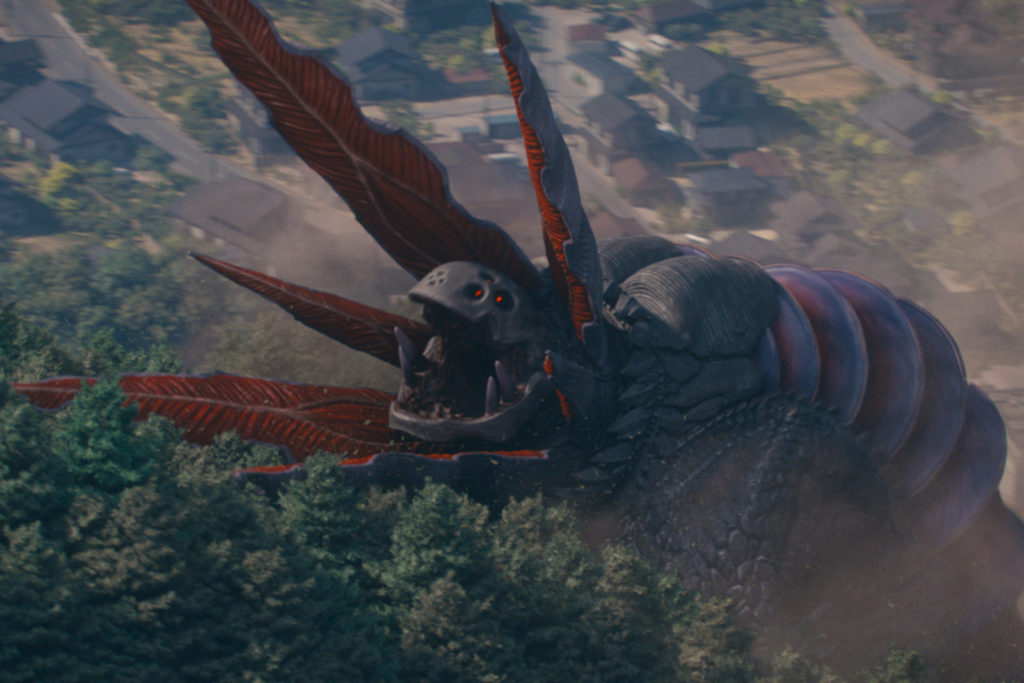
Q: In this film, you worked on Ultraman by using CG, scanning the body shape of Mr. Satoshi Furuya, who played Ultraman in the original series. What was the rationale for sticking to it using Mr. Furuya?
Shinji Higuchi: It’s been more than 55 years since the original “Ultraman.” During that time no one appeared that surpasses his proportions. Of course, if there’s a person with similar proportions, I would have had a younger person do it. But some are tall, or have smaller heads, some have long arms, and others have extremely long fingers at the end of their arms. He had all of that. Even if other people suit up as Ultraman, they will only look human, but Mr. Furuya is still doing well with his age [79 years old]. He still looks like “Ultraman,” doesn’t he?
Tomoya Nishino: That’s right. We’ve grown accustomed to the original “Ultraman” but compared to the other Ultraman after “Ultraman Seven,” I felt that Mr. Furuya has a special body shape. It’s about his height or something like that, but his silhouette was in the memories of director Higuchi and all of our staff. I think that if we were to create a new one set up in this era, Mr. Furuya should be the basis for “Ultraman.”
Q: There are a lot of parts that follow the original.
Shinji Higuchi: We wanted to imitate some of the good points from the original “Ultraman” series. We were thinking about following in some of their footsteps, but it all came out good for Mr. Furuya’s case. Whether it was how to take a little step forward, or how to shift his weight at that time, to move more agilely, or even to show off his fighting style, he was really good at it. If you’re a master of martial arts, you’re better at fighting, but Mr. Furuya wasn’t like that. The fact that he looks more like an amateur than a professional fighter made me want to support him for the rest of my life.
Q: The original “Ultraman” series had a unique way of creating dioramas [a model representing a scene with three-dimensional figures, either in miniature or as a large-scale museum exhibit]. Now, we live in an era where we can create anything through computer graphics, but how much was the creation of dioramas reflected in this film?
Shinji Higuchi: Actually, most of the work is done in 3D CG, but a small part was done using dioramas, maybe three in total. The first time was when Ultraman came to Earth for the first time, the forest was blown by the blast and the trees were knocked down. All those trees are seen in a diorama. I can only think of two instances right now. The second one, was when Hiroko Asami (Played by Masami Nagasawa) became a giant woman, where she hit her elbow and the building collapsed, we used a diorama as well for all of the offices inside the building. Even though we had three dioramas, I can only think of two right now…

Q: It makes me happy to see things that are recognizable as fake(diorama) being broken.
Shinji Higuchi: It’s a strange story, but there were almost no jobs for people who specialized in making dioramas. When I make 3DCG, it looks like real scenery, so I wanted to make it look a little like a diorama. In the case of special effects Including dioramas, I would arrange each model building one by one to see how they would be arranged. But as you watch it, you’ll find parts of it that make you think you shouldn’t do things like this. Even the parts that look like 3DCG gave the impression that they look a little like a model [diorama].
Q:It’s like putting your heart into something.
Shinji Higuchi: That’s right. It’s not an exact match, but it feels like it’s intentionally putting in a hand-made ambiguous part.
Q: Actor Takumi Saito, who played the lead role in this film, did you intend to cast him as a lead role after you finished your script?
Shinji Higuchi: As we put all the candidates and discussed what I wanted for the main character was the element of innocence. I want an innocent side like a boy, even if he’s already an adult. I want someone who is honest. I wanted someone who had a beautiful heart like a single crystal, not a complicated personality. People of this age (Saito) go through various lives, so it gradually becomes complicated. Takumi Saito was the one who miraculously had all those qualities, so I asked him to do it.
Q : You also worked with Hideaki Anno in the movie “Shin Godzilla.” Were there any exchanges of opinions during the planning and scripting stages of this film, “Shin Ultraman”?
Shinji Higuchi: It’s been over 30 years since we first met, so it’s been a long time. (Laughs) First of all, (with Anno) we exchanged ideas about which kaiju(Monsters) and which aliens to bring out.
In other words, it was like a fan survey, where we discussed which kaiju(Monsters) would be better. I know I’ve known him for 30 years, so when I imagine what he wants to do, it’s about how to connect with him. In his mind, the alien was a non-negotiable. It was clear that he wanted to be an alien. The meaning of the first two Kaiju(Monsters) and then, as you can see, it doesn’t look like it at first, but it’s their kaiju(Monsters) existence that influences the story. And when it comes to a realistic story, there is a budget that we need to worry about, because it costs money to make Kaiju(Monsters). If so, just like the original Ultraman, if you replace only the neck model and keep the body the same and you can get it down cheaply, the budget for two Kaiju(Monsters) would normally be 1.5 instead of 2 kaiju(Monsters) budget. While such thoughts swirled around in my head, it felt like I was gradually making decisions.
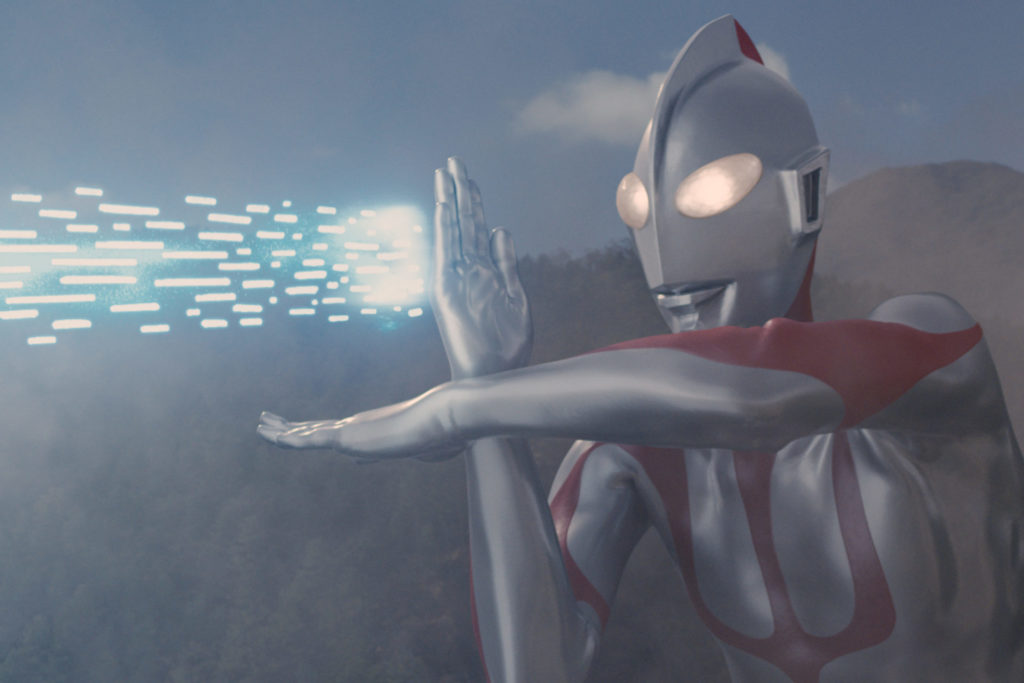
Q : What generation of Americans do you think Ultraman is known to? Is it as well-known as “Godzilla”, or does “Ultraman” have a big fan base in a certain generation?
Shinji Higuchi: About 30 years ago in the ‘90s, I participated in a production called “Ultraman Powered” in Los Angeles. I briefly participated in the “Ultraman” movie produced here (United States), and it was a project to make “Ultraman” with Japanese capital and American staff. At that time, when I interviewed the staff in advance, they didn’t know about “Ultraman.” In the U.S, the existence of Ultraman, which has hardly been broadcast on TV, was not known.
So my role was to explain it to many American staff who didn’t even know about its existence until They got involved in this project. That’s why I felt like Ultraman had a really bad affinity with American culture. In the U.S, even though there are various religions, there is a culture of believing in gods.
Many Japanese people have a shallow level of belief in religion. Japanese people celebrate Christmas, and on January 1st, they go to a shrine, and when they die, they hold a Buddhist funeral. But once Americans believe in one religion, they don’t often convert to another religion.
However, I think that the existence of “Ultraman” is an extension of the fact that Japanese people are okay with those types of things. It may be a request to God that someone will help you when you are in trouble. In the U.S, there is a strong sense of autonomy, and if there is a problem, I think that we have to solve it ourselves.
I remember that it was very difficult to explain such things at the time. Americans ask me, “Is that so attractive?” That’s why the story is about one character (Ultraman) having two personalities and becoming a god himself. By doing so, I felt that the story began to move clearly within me.
However, from the perspective of the Americans here, they would say, “How can Ultraman become a god?” At the time, it was difficult to find common ground. That’s why I’m really looking forward to seeing how Americans will react, 30 years later.
Compared to 30 years ago, maybe Japanese culture and manga have permeated in the U.S, and I feel that there are points where people can understand each other. However, I didn’t make this work for the United States at all, so I made it as a domestic product, so it’s interesting how it will be received.
Q : What made you interested in filmmaking in the first place?
Tomoya Nishino : When I was in elementary school, my father rented Michael Bay’s movie “Rock” on a rental video in the 90’s. From there, I fell in love with Hollywood movies and wanted to do something in the movie industry. Of course, more than that, I think I had some interest in filmmaking because I had seen “Ultraman” when I was a child. It was when I was in elementary school that it became clear that it was a movie.
Shinji Higuchi: When I was one-year old, “Ultraman” aired. Since then, there was a lot of “Ultraman” and “Godzilla” content. However, at that time there were still TVs, but there were no VCRs or rental videos. There was also the possibility that I could have lost all the memories of “Ultraman” and “Godzilla.” I had a VCR in my head that I could remember and ruminate on, and I was doing things that I enjoyed while remembering it.
The reason why I was doing that was because my classmates were looking forward to listening to my recollections. My classmates would react like, “Oh, that’s right, that’s right, that’s interesting, and that’s interesting.” I was playing that kind of role in my class. However, one by one, they gradually moved on from elementary school to junior high school, and no longer liked “Ultraman” and “Godzilla.” They liked sports, music, and other age-appropriate things.
The number of people who like “Ultraman” and “Godzilla” was steadily decreasing. Some people fell in love with manga and say it’s strange that you still love kaiju [monsters]. When I started to feel somewhat isolated, a movie called “Jaws” by Steven Spielberg came along.
It was a movie about man-eating sharks. There was a fundamentally exciting element, and many movies up until that point were lacking an edge. When I saw “Jaws” for the first time, it was happening as if it was real. The pain and fear of people being eaten by sharks was there in that movie. It was a completely different experience than any other movie I’ve ever seen.
After that, similar experiences happened one after another. “Star Wars” came out, and then “Alien.” For me, who had been happy with “Ultraman” and “Godzilla” until then, I was able to have a high-quality cinematic experience. Those films were big hits, so of course we saw them and talked about them in class. My classmates said that Japan shouldn’t just be making “Godzilla” and “Ultraman!”
Certainly, I felt [the American films] were good. Even though I was in elementary school, I always thought, “That’s not always the case.” When “Star Wars” came out the gap between America and Japan began to emerge. I thought that Japan could do more. If I had been exposed to American films like my classmates, I would probably have wanted to study English, go to Hollywood, and make films here.
However, at that time, for some reason, even though I wasn’t making movies yet, I thought, “Japan can’t be beaten.” So I started making films in Japan. Even when I made it in Japan, I always thought about how I could make a film that wouldn’t be ridiculed by my junior high school classmates.
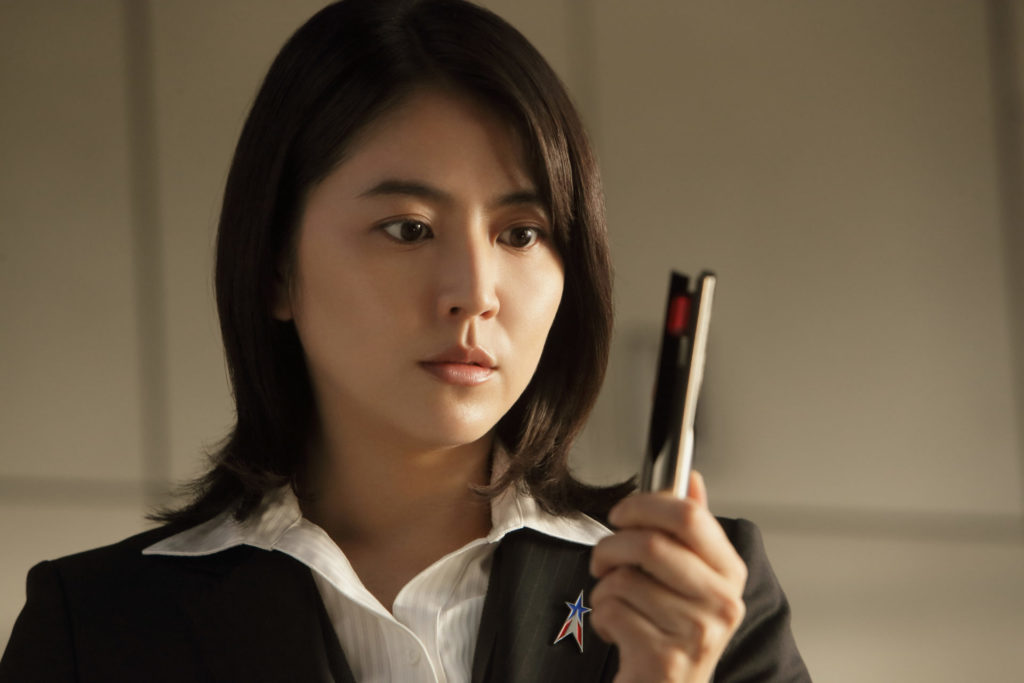
Q: It was important to select the members of Katokutai (S-Class Special Suppression Protocol-Enforcement Unit) which makes people think that “Ultraman” can coexist with humans. What was the process of casting the members of Katokutai: Masami Nagasawa, Hidetoshi Nishijima, Akari Hayami and Daiki Arioka?
Shinji Higuchi: To put it simply, we chose really good people [laughs]. This may be similar to casting Takumi Saito which I mentioned earlier, but he’s a person who doesn’t have a so-called duality. When you live as a human being, you lie, commit crimes, and have duality as a human. Even if you show that kind of thing to a child, it doesn’t serve as a role model for them, so I chose a character who, although not perfect, can be a positive role model for children when they’re in trouble. I’ve been picking out those with such qualities.
Tomoya Nishino: Well, there are other producers other than Director Higuchi, Mr. Anno, and myself. There may have been some placement, and I may have been somewhat conscious of that, but I think that it is actually reflected in the eyes of the audience without such a thing. Of course, Arioka-kun is a little different from the original ‘Ultraman’ series Ide member, but I think they chose an innocent person who can be accepted in the current era.
Tomoya Nishino: There are other producers other than Director Higuchi, Mr. Anno, and myself, but while discussing with everyone, the first thing I noticed was Mr. Saito’s innocence. The original “Ultraman” had the same number of members, and I was conscious of that, but that’s not the case in reality and that’s what the audience sees. Of course, there are things like Daiki Arioka being slightly different from Ide, the original member of “Ultraman” series, but since it’s being done now, I think they chose an innocent person who can be accepted in this era.
Q: There are many Americans who’ve seen the movie “Drive My Car” starring Hidetoshi Nishijima. I think people will look forward to seeing this film as well.
Shinji Higuchi: Actually, the filming order was reversed. We shot this film before he starred in “Drive My Car.” Indeed, “Drive My Car” was hailed at the Cannes Film Festival and the Academy Awards and received worldwide acclaim. What would I have done if Mr. Nishijima said, “I won’t appear to promote this kind of film because I went to the Cannes Film Festival and the Academy Awards.” But that obviously wasn’t the case at all. I was really happy that they were so happy to see the finished product of this film.
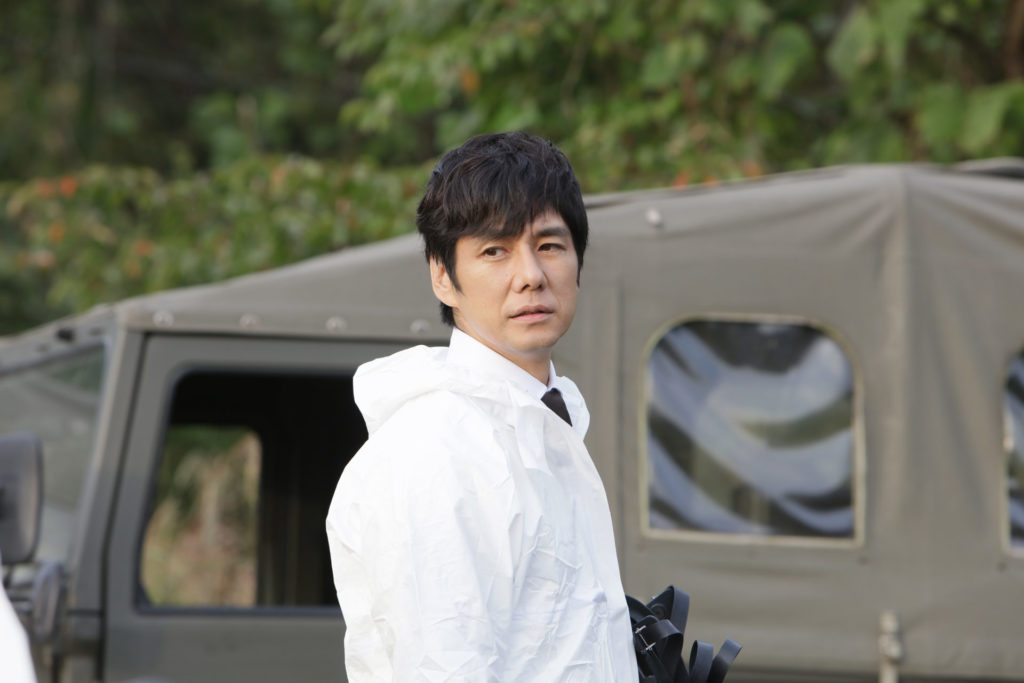
Check out more of Nobuhiro’s articles.
Here’s the trailer of the film.

